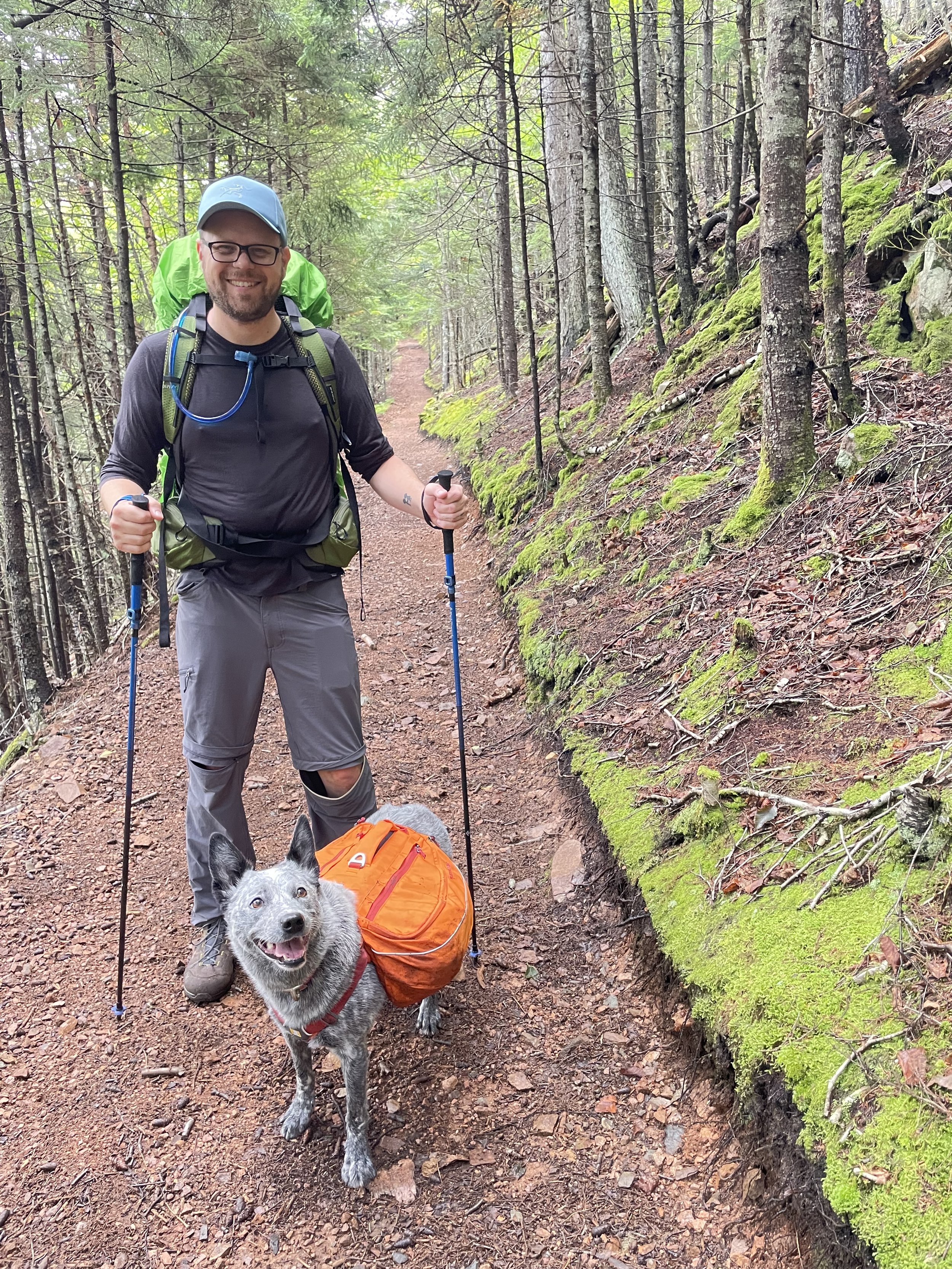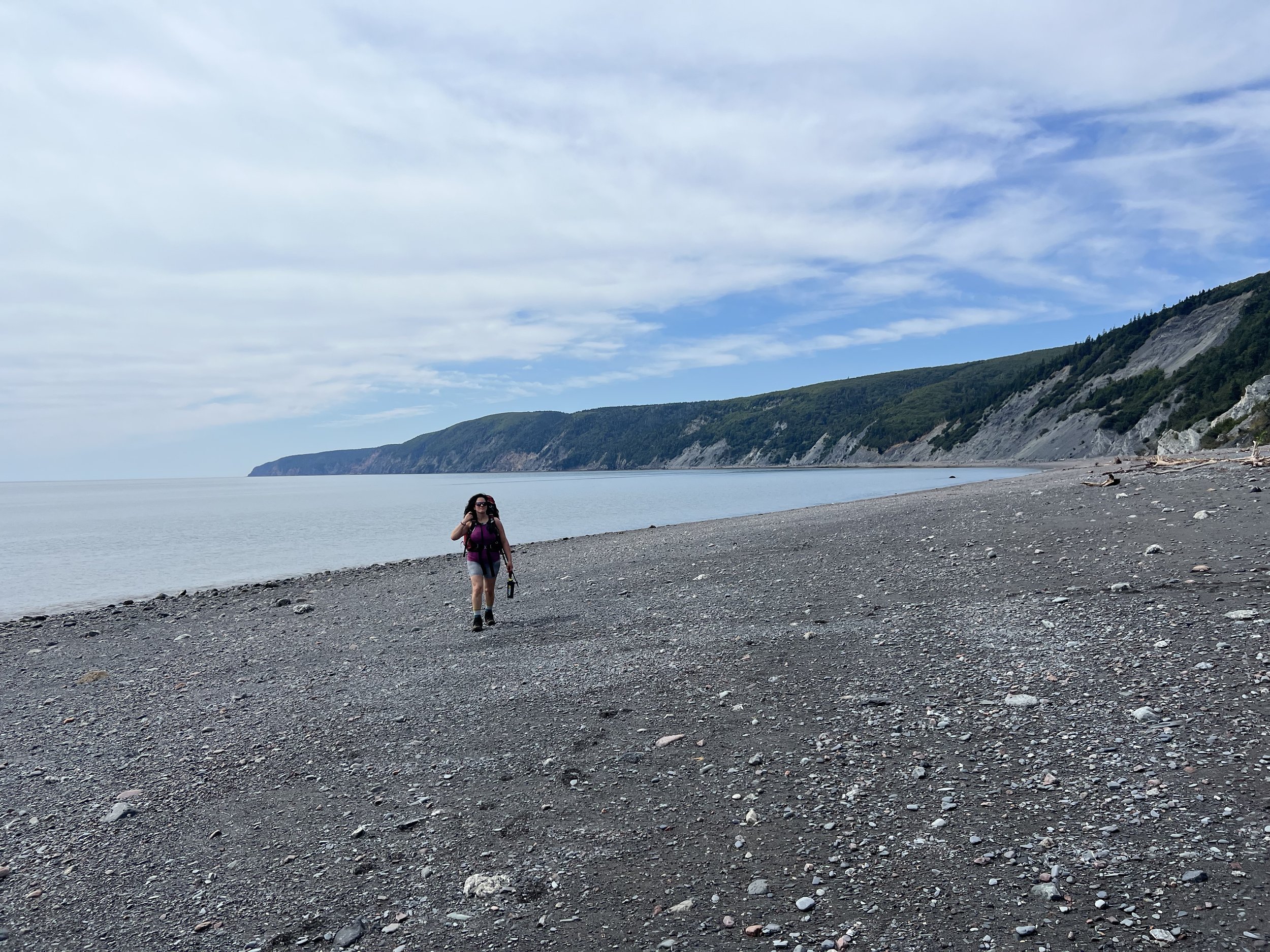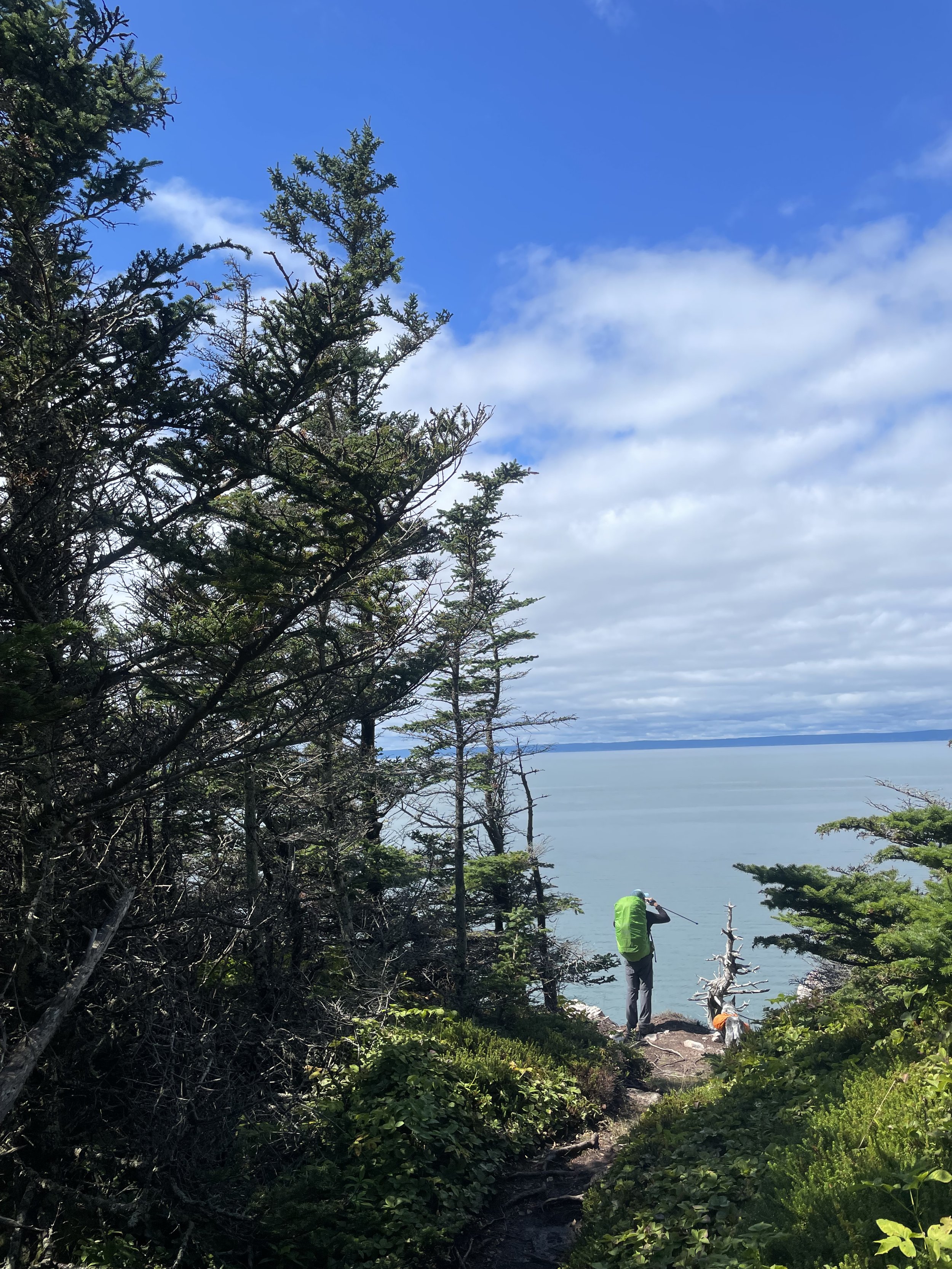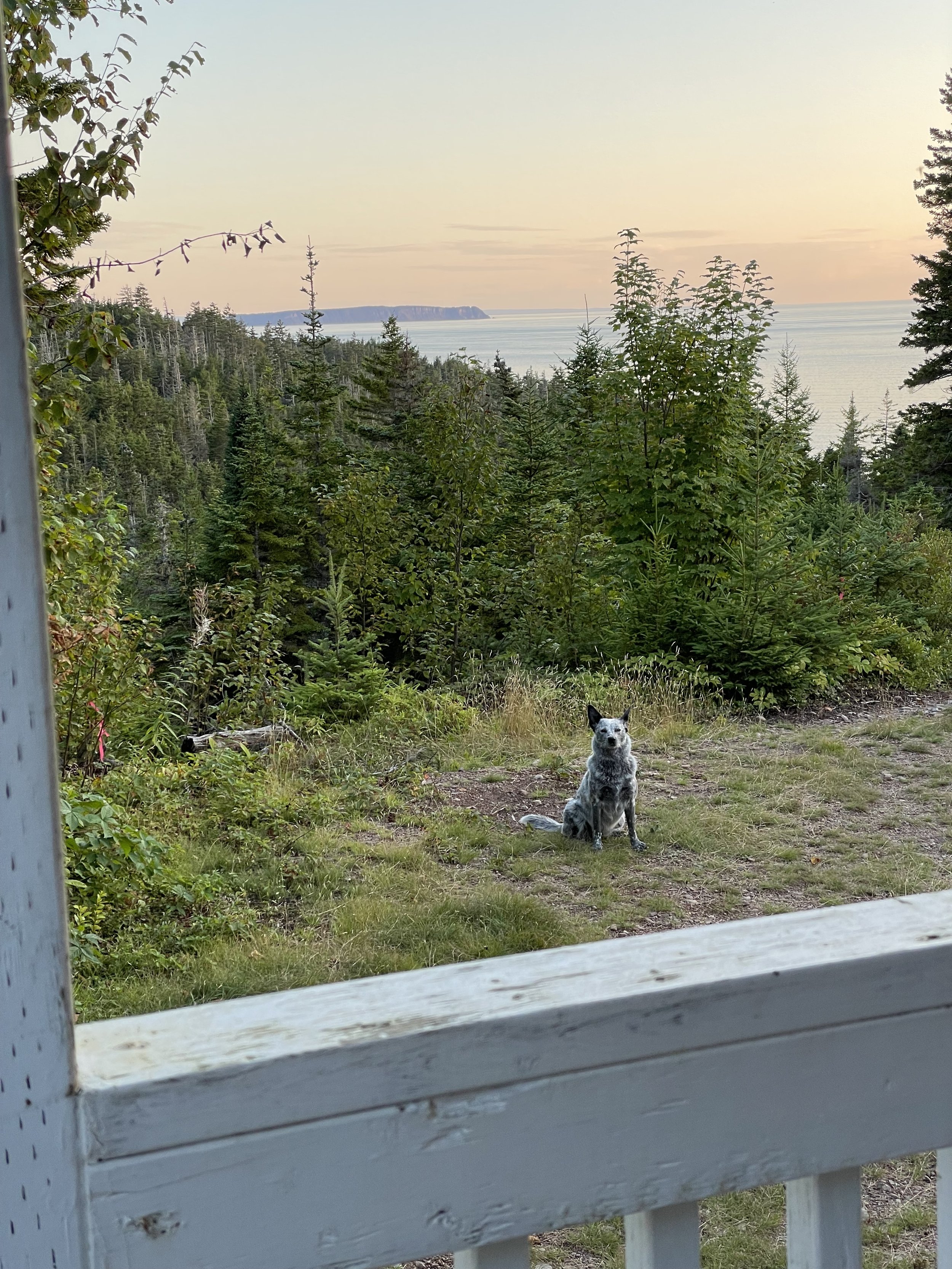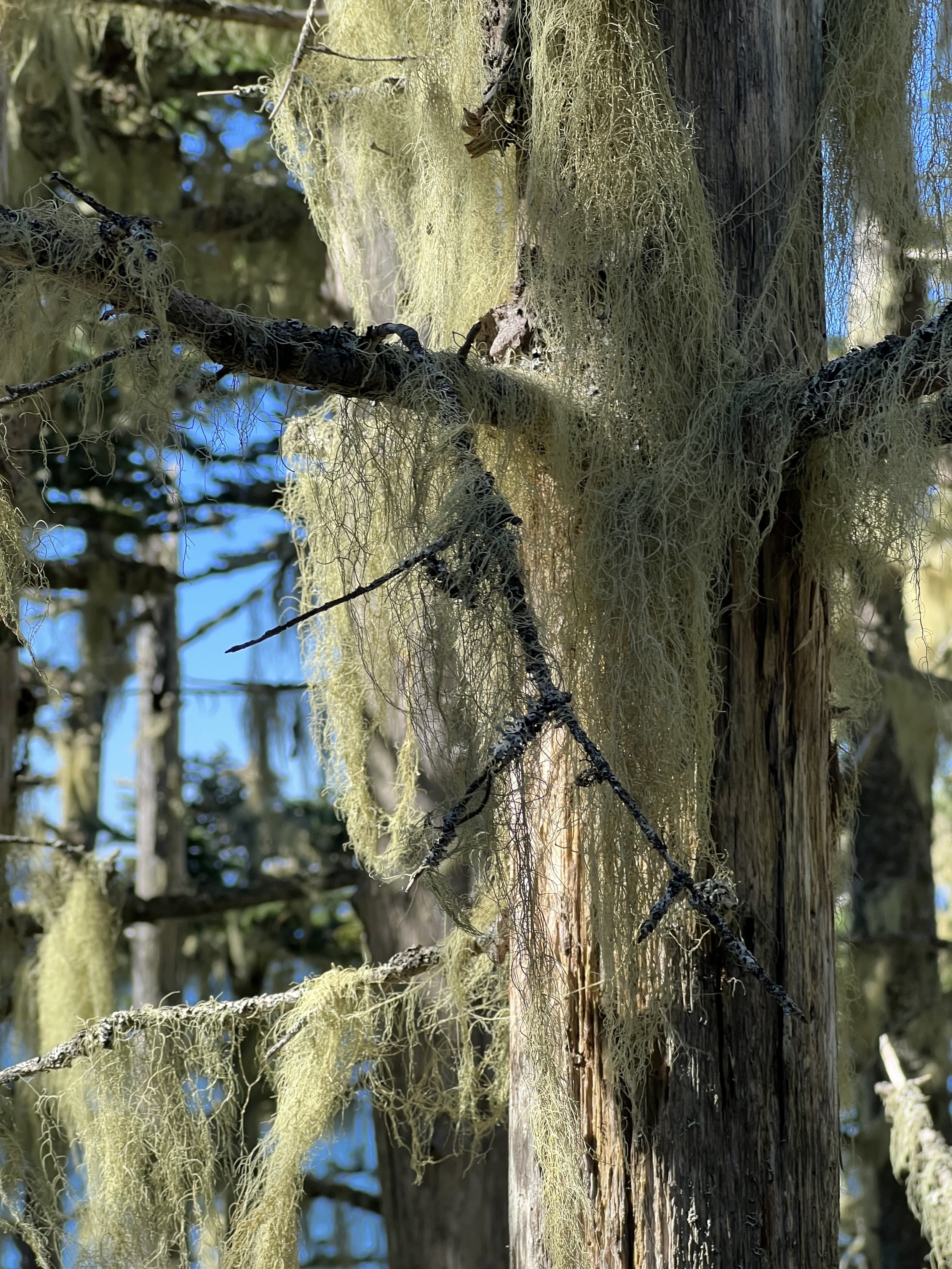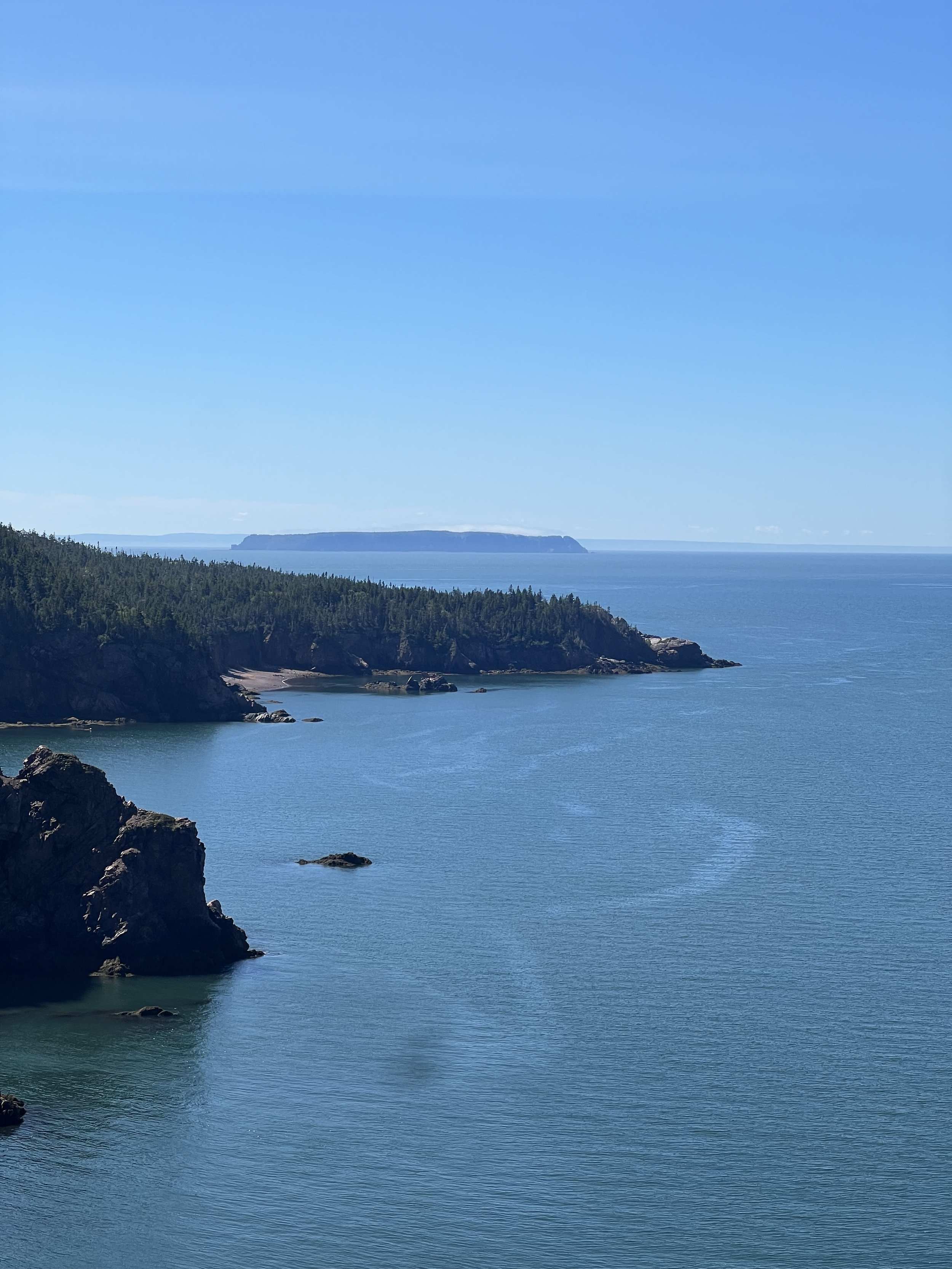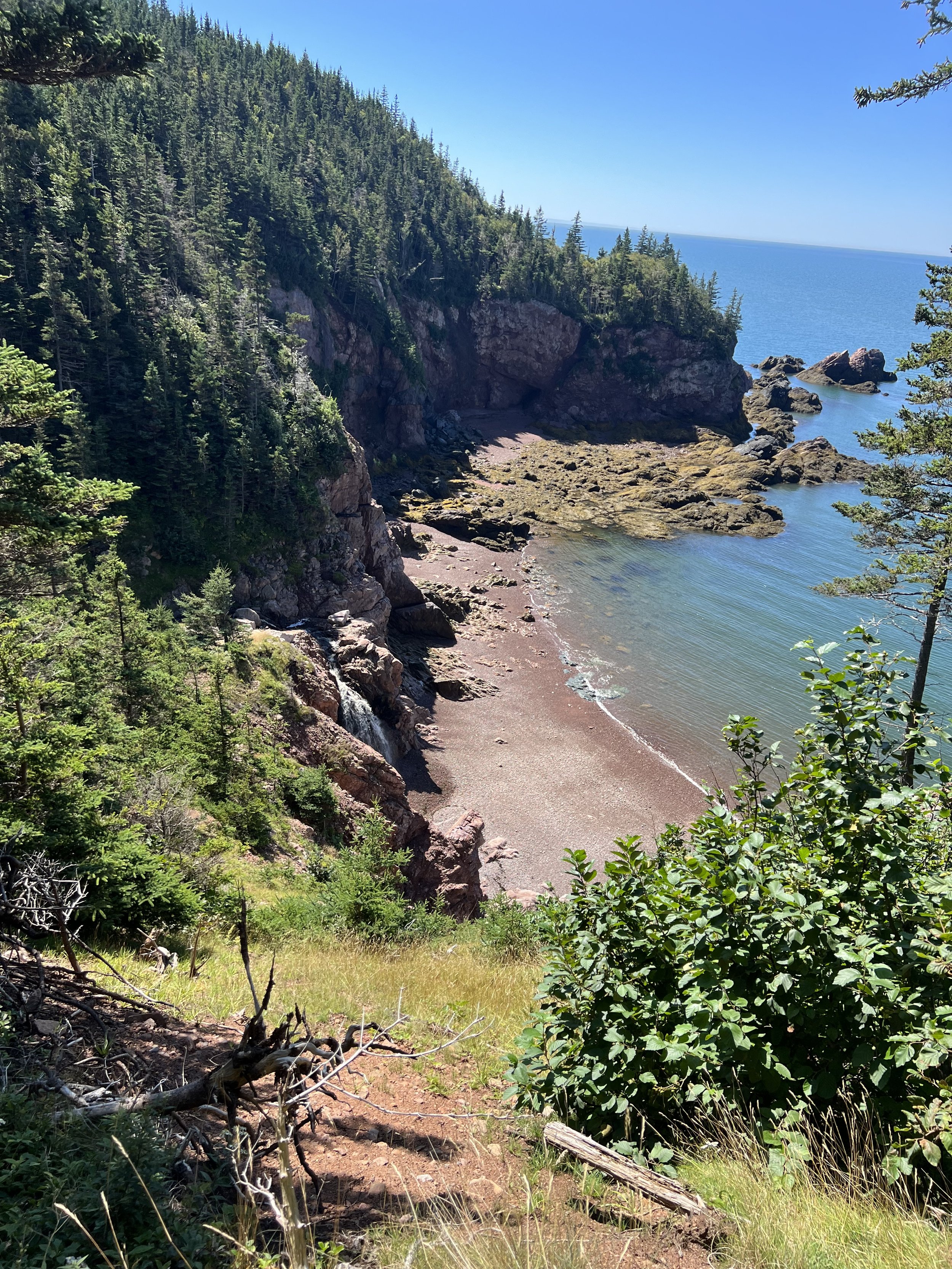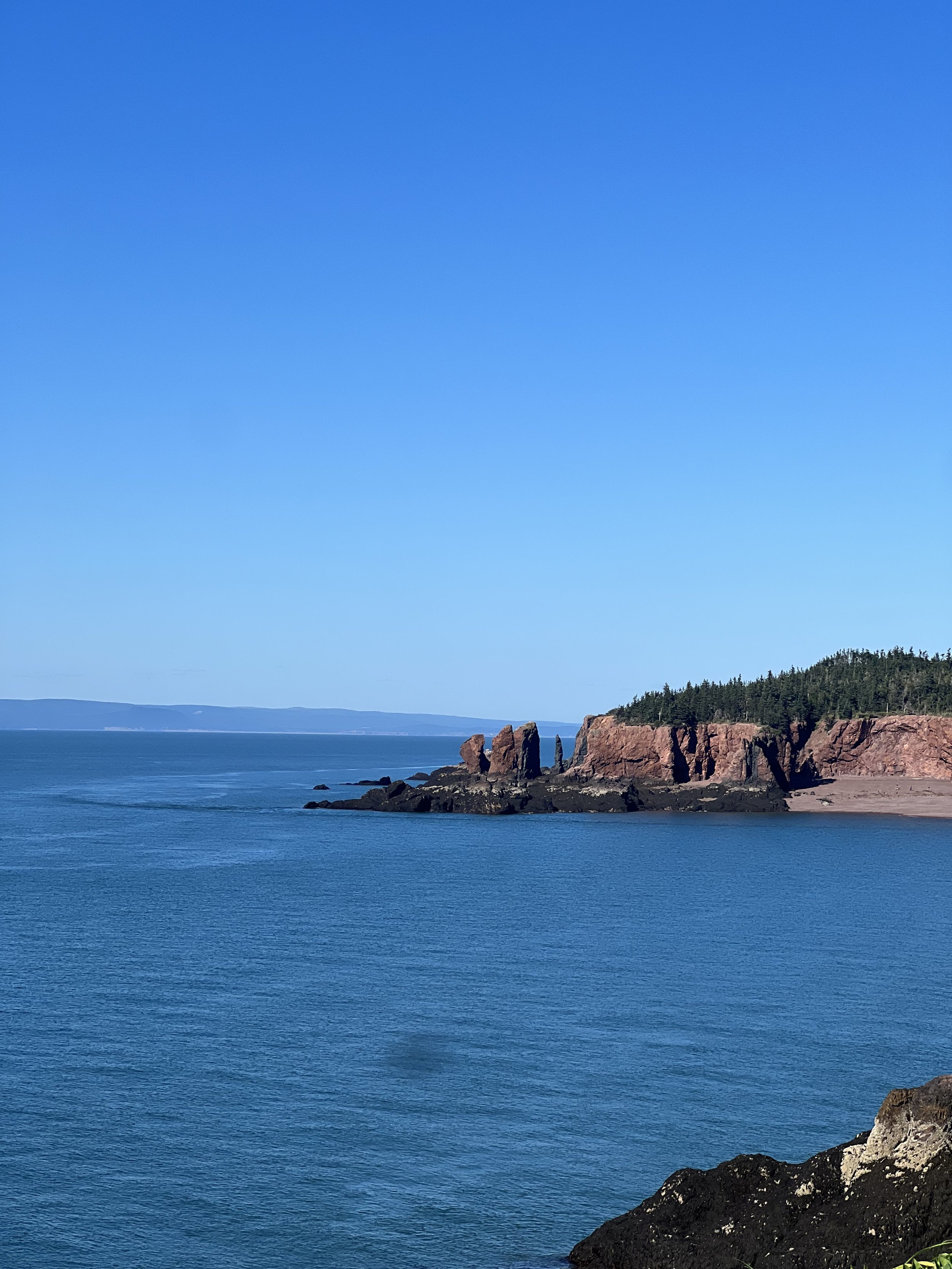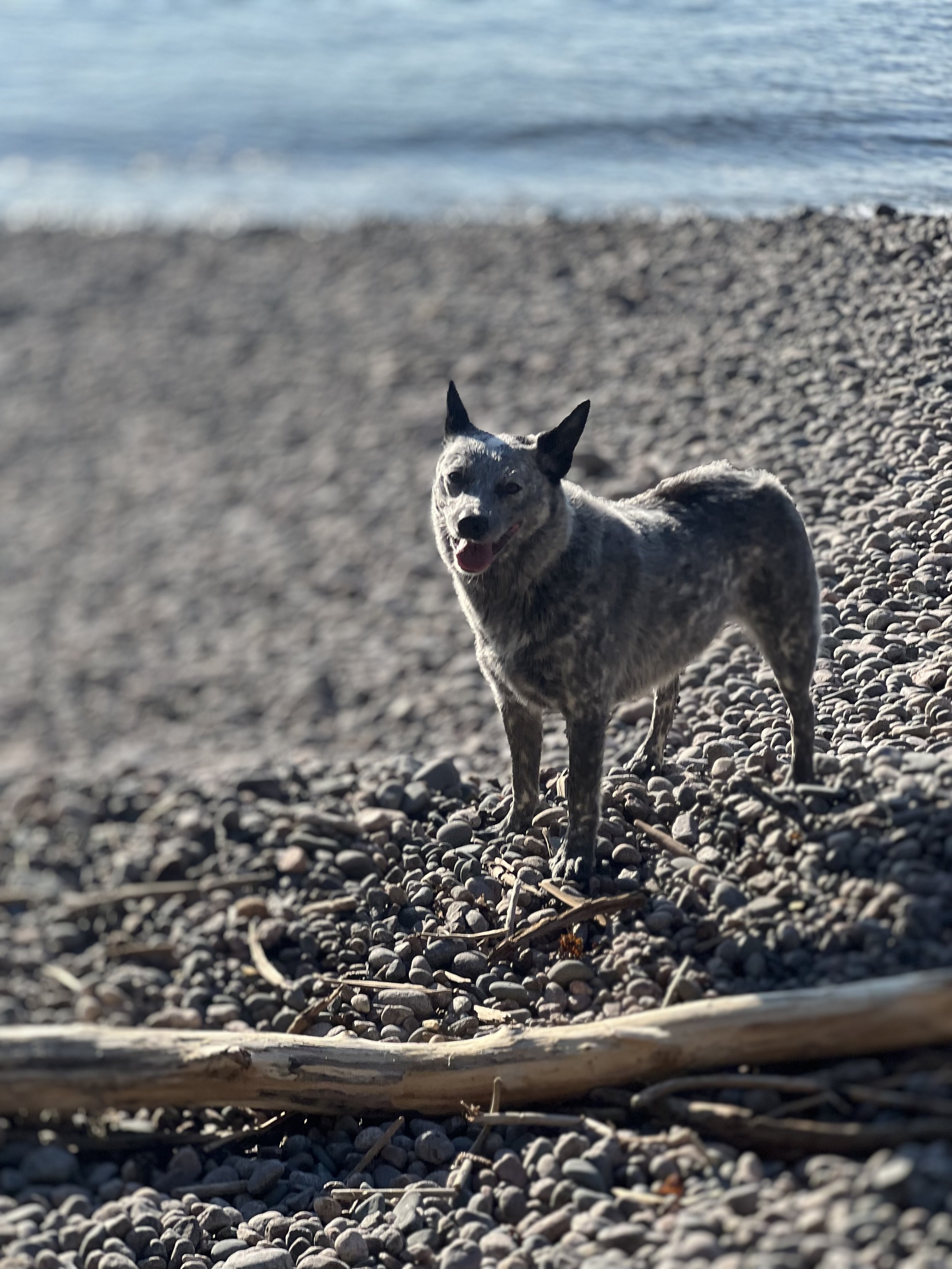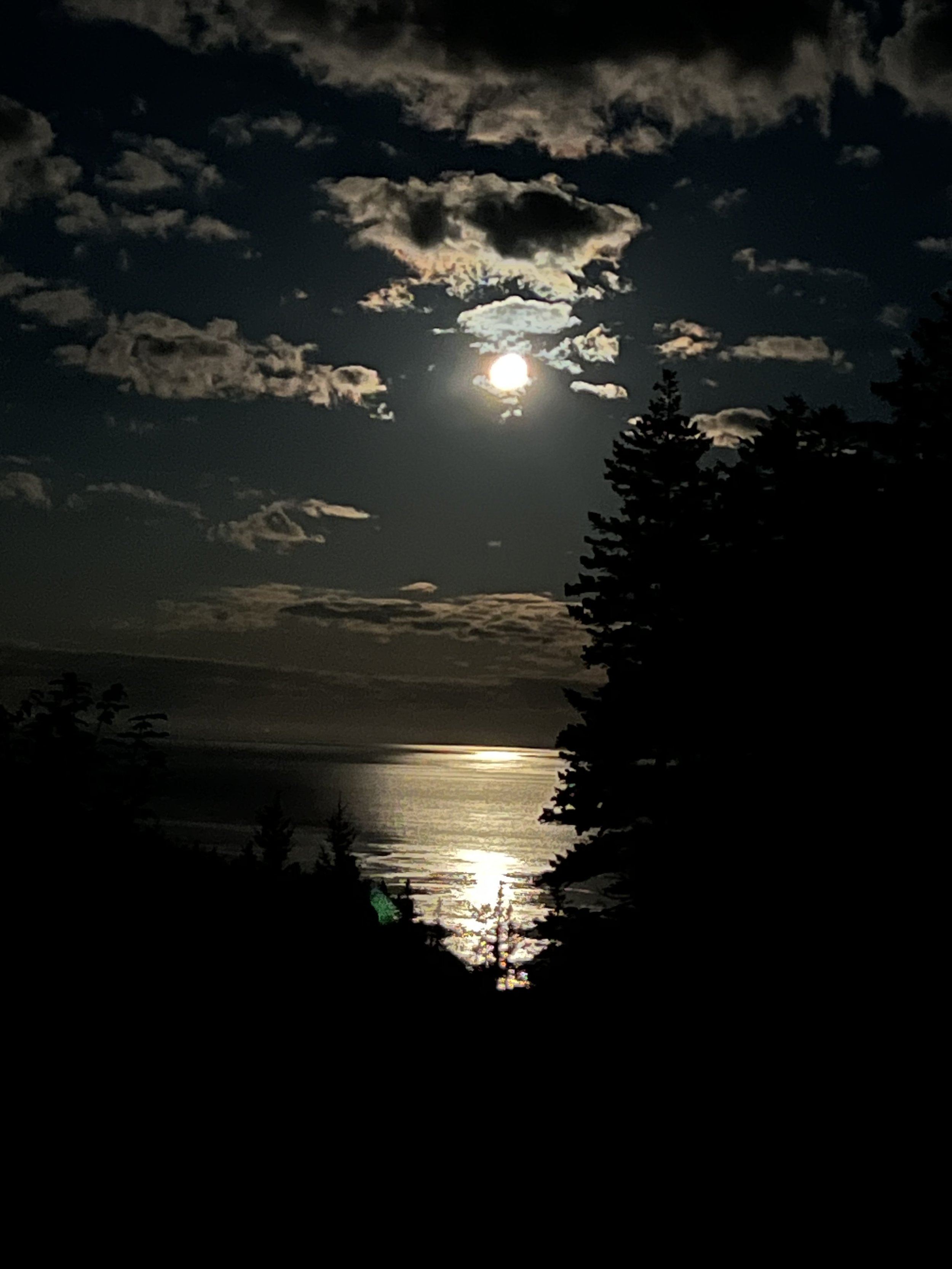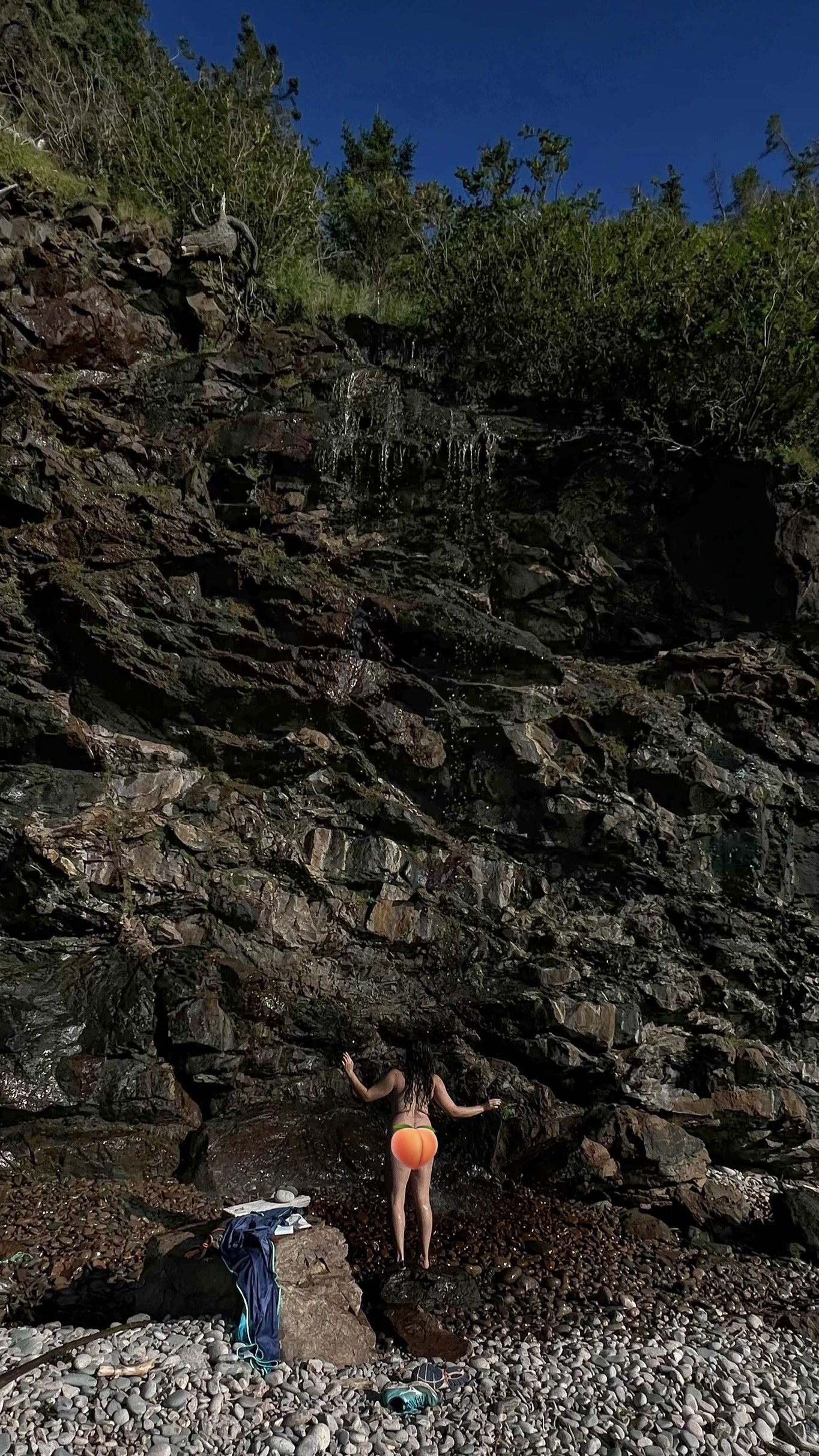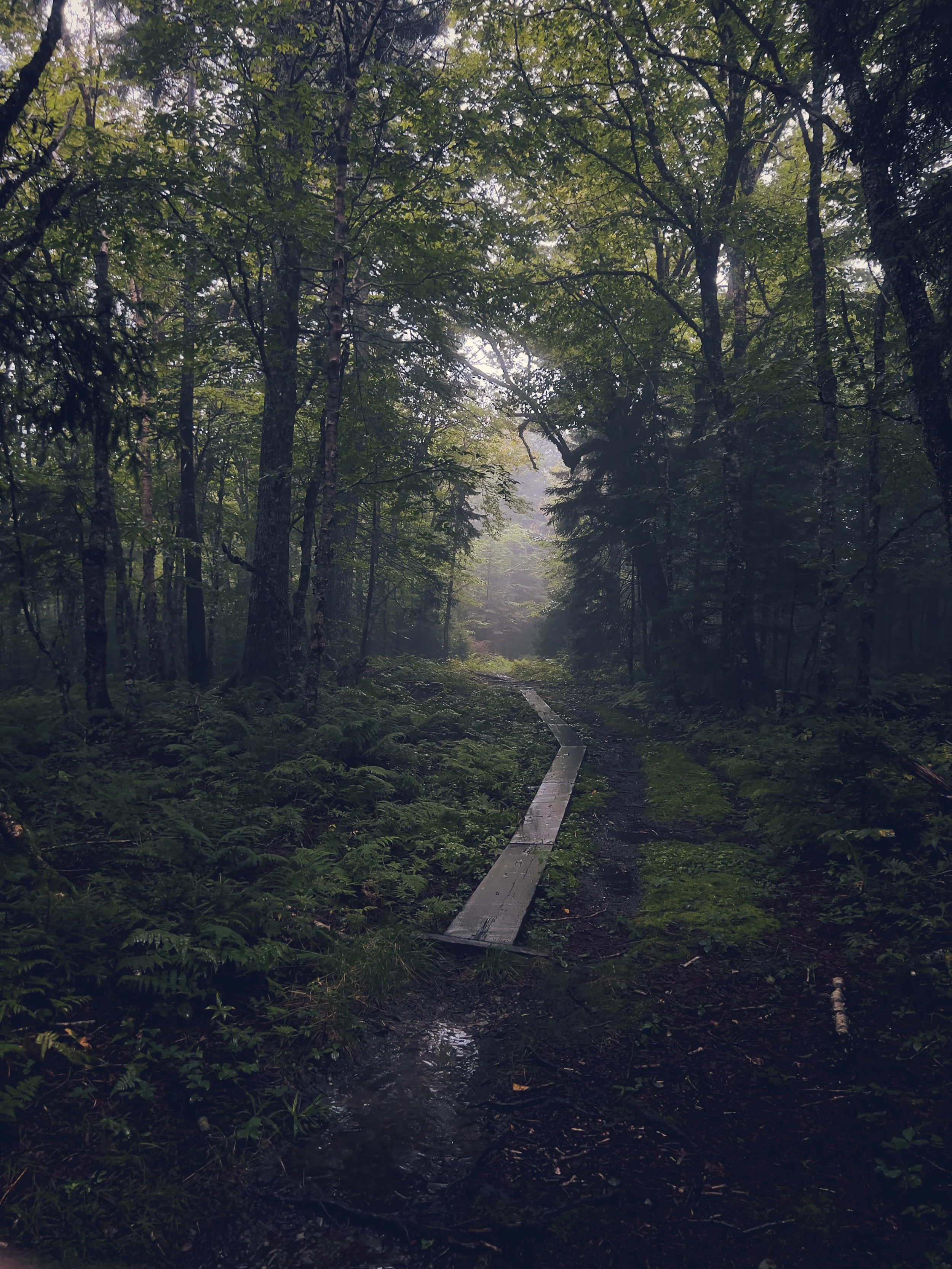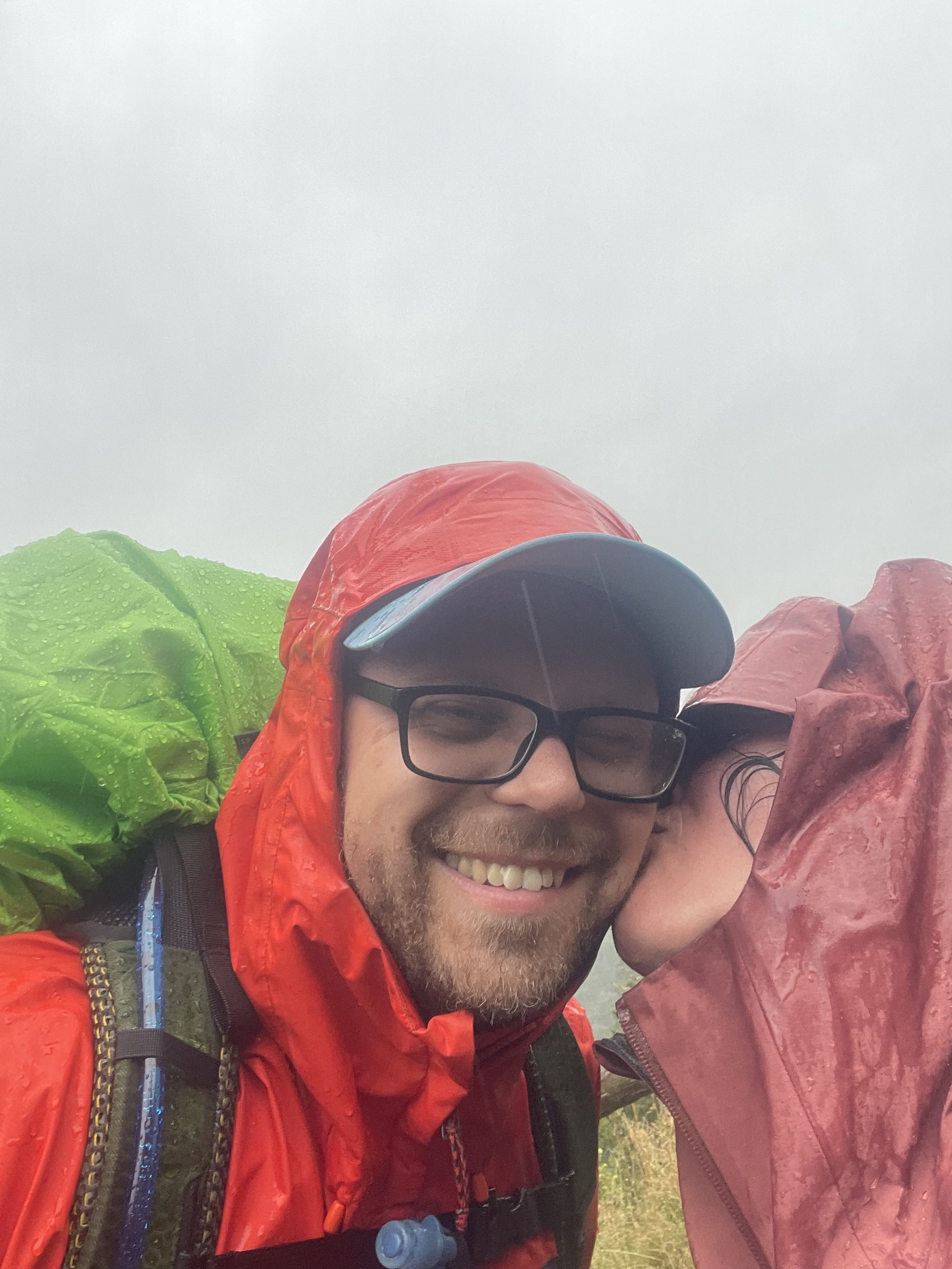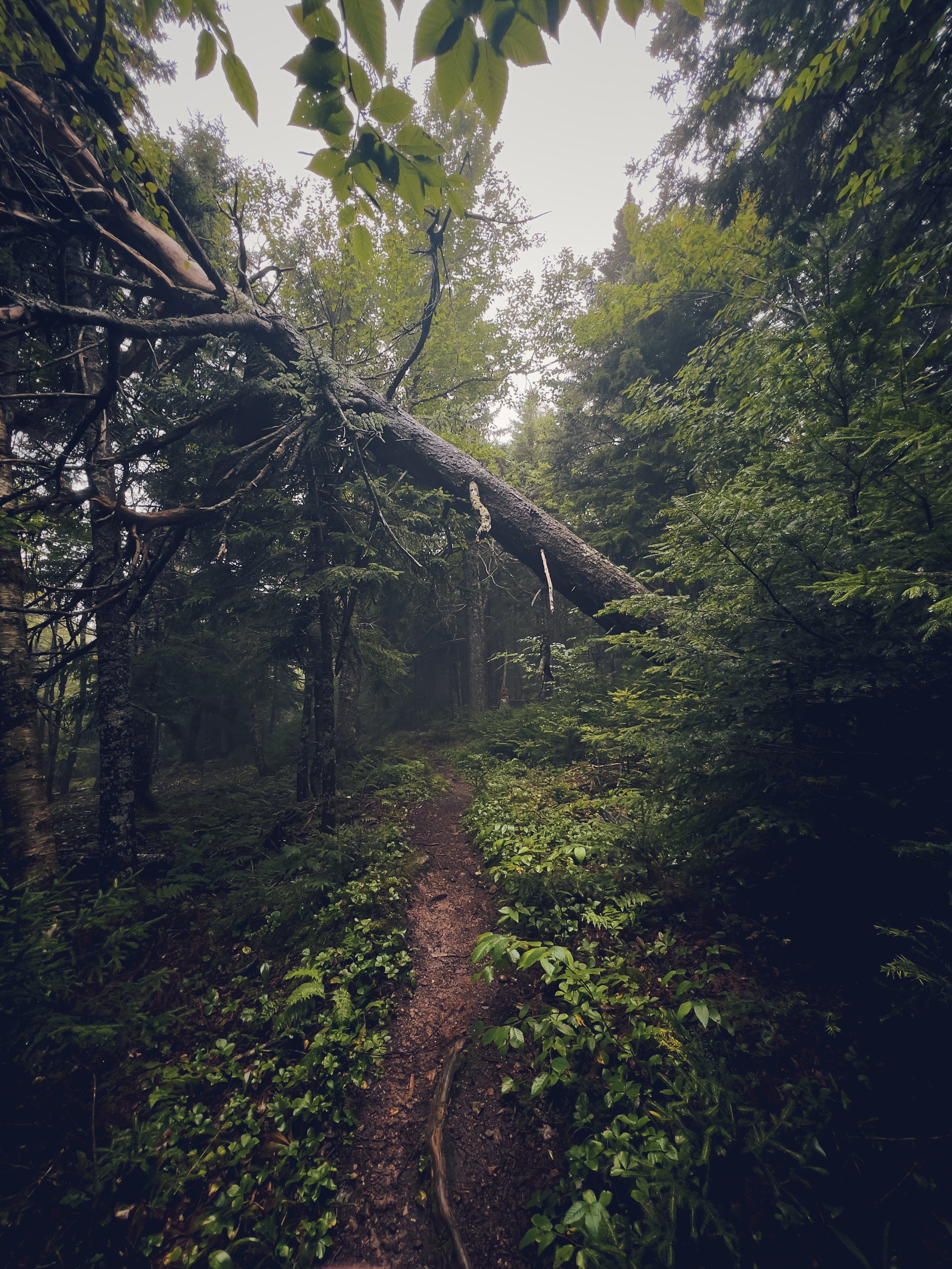I have a Goldilocks sort of relationship with the weather, so for me the fall season provides that fine balance of those ‘not too hot’ & ‘not too cold’ temperatures that inspire cozier clothing, hot cups of tea & nights snuggled around an outdoor fire. This season also motivates me to trip out to the forest more often in search of hiking experiences.
Luckily, Nova Scotia is rich in offerings of local trails & paths curated for adventure by foot. Walking in the forest offers a multitude of benefits for both the mind & body. Fresh air, gentle movement & nature’s soundscape mobilizes our body & quell anxieties. My best meditations happen while hiking in the woods. Hiking provides an opportunity to disconnect from all of life’s moving parts, allowing time to journey through the woods invites an awareness of nature’s most basic elements. There’s a myriad of studies out there to prove these points.
Recently, I ventured the trail along the Chignecto coastline loop - 53km of backcountry paths bursting with cliffs, streams, rocky coastline & ocean views.
Long distances have always appealed to me. I enjoy long-haul activities such as biking across provinces or training for ½ marathons. I’m not an athlete, but with long-range, endurance-style activities I have a physical fascination that always gets me into exploring my limits, mentally just as equally as physically. For me, there’s a layer of ‘flow’ that’s triggered at the 3rd or 4th hour that I love to curiously explore.
Chignecto is full of ups & downs, literally. The hike itself is rated ‘difficult’ and throughout the 53kms one can expect to rise & fall for a total of 2400m of elevation gain throughout.
The ups & downs of the trail that greet us on this hike are reminiscent of similar ebbs and flows in daily living.
As I tackle each switchback or mountain to climb, what kind of composure keeps me company? How does lightness find each footstep? And how do my most invasive thoughts travel with me? With each step comes an invitation to be fully present in my body & mind. Attentive & appreciative of what I am capable of experiencing in life.
It was my 3rd time doing this loop, and this time we decided to complete it in a ‘leisurely’ 4 days instead of 3. With pup & partner in tow, we were all tail wags starting out. In recent years I would hear about friends doing Chignecto and with some inquisitive jealousy I would listen to their captivating stories. After completing my first loop, this trail has become an obsession on how can I better travel into the wilderness. The struggle of this hike is real….but also beautiful. Training & planning for immersion into this type of trek should be well thought out, carefully considering supplies, nutrition & physicality.
The sign at the start of the hike seems to tease slightly, indicating ‘It’s no walk in the park’. This adventure has inspired me to curate a small list of ‘must bring’ suggestions & considerations for anyone who wants to explore the outdoors by foot.
For long hikes, 1 hour+, here’s a small list of suggestions:
Weather ~ Keep it in mind & bring layers at the very minimum to your trailhead. Here in NS, we can experience isolated pockets of weather that differ from the forecast in the area. A base layer (t-shirt or long sleeve), mid-layer (Fleece), and shell (a good rain jacket), are a great combo for fall in NS.
Proper footwear ~ Clearly, I’m biased but hiking & happiness go hand in hand….or rather foot in boot! Unless you’ve chosen poorly. On technical terrain, your sneakers might not cut it! Hiking shoes and boots offer more protection and support. They have tougher soles so you don’t feel sharp rocks and sticks, and they often have reinforced toe boxes so you don’t hurt yourself when you stub your toe. They also offer more ankle and heel support, especially mid-height boots. If you’re doing a trail with a lot of difficult and uneven terrain or elevation changes, this support can prevent you from getting injured while also extending the time you can hike without feeling strain. There is a bit of a debate about non-waterproof trail runners versus waterproof boots in the hiking community. Fans of the former argue that runners are lighter, and dry quicker. Waterproof boots will hopefully prevent you from getting a soaker, or at least allow you to step through water of certain heights before it gets in. They don’t dry nearly as quickly, though. It’s inevitable that you will encounter wet areas, especially in Nova Scotia. I personally wear waterproof, mid-height boots (I love Solomon’s & Keen’s and my partner swears by his La Sportiva’s) on most hikes, unless it’s a really easy trail when sneakers do the trick. The last consideration with shoes is sizing. For technical hiking, you should size up a half or full size to give your feet room to splay out. This really helps on declines and prevents your toes from being squished together. Take some time to try on lots of different shoes at The Trail Shop, MEC, or your favourite local shop.
Socks ~ Wear technical socks, brands like Smartwool, Injiji, Darn Tough or Icebreaker are great investments. Quality socks can help your feet feel & stay dry in wet conditions, and stay cool in hot weather. Socks with a lower percentage of synthetic fibre & a higher percentage of wool fibre are best.
Poles ~ Hiking poles are super helpful for full-body balance and stabilization. They can make the difference between finishing a hike with energy to spare or feeling wasted on your way home.
AllTrails App and Map ~ You can download your trail map ahead of time using AllTrails so there’s no need to use your data. Just in case your cell phone dies, print off your trail map and leave it in a zip lock bag somewhere in your hiking back or on your person.
Snacks & Electrolytes ~ I always carry an emergency protein or energy bar as well as an electrolyte mix for refreshments. An apple or two can’t hurt either. Something refreshing to crunch into will be a welcome palate cleanser for the car ride home. And of course, always bring water. For one to two hour hikes you will likely be just fine with a snack stash on your person, but if your planning for 1/2 day, full day or more….consider & curate your enjoyment of food & nutritional needs with great care.
Bug stuff, sunscreen ~ Nothing ruins a beautiful hike more than trying to out-hike the blackflies!
Pup considerations ~ I keep an ‘AIR LIFT’’ for most hikes while I have my pup Cashew on the trails. It’s mostly for peace of mind should we ever be in a position where she needs to get evacuated out of a trail. Even though she’s only 40-45 lbs, if I needed to carry her even for a few minutes I may risk injuring us both, especially in technical environments (imagine porcupine quills in paws). Air lifts will hammock the underbelly of your pup and you can wear them like a backpack. I suggest practicing once or twice with your pup at home (with lots of treats), so that at least you’re familiar with the logistics of setting it up in an emergency.
Keep yourself comfortable during your outdoor adventures. Know your skill level & comfort for challenge and pick your path accordingly. Inform a family member or friend of your route and expected time frame. Remember to pack out what you packed in, and of course, whenever you are in nature, respect the plants & wildlife that occupy the surrounding habitats.
Happy trails & may the ‘forest’ be with you.
P.S. To learn more specifically about Cape Chignecto & plan an adventure for yourself, visit: https://parks.novascotia.ca/park/cape-chignecto







